- Books Name
- CBSE Class 6 Science Book
- Publication
- Param Publication
- Course
- CBSE Class 6
- Subject
- Science
Methods of Demagnetising a Permanent Magnet
(i) Magnet can be demagnetised by :
(A) If the magnet is stored without using magnetic keepers, Self-demagnetisation will be possible.
Magnets tend to become weak after some time. This weakening is called self-demagnetisation. Small pieces of soft iron are placed in contact with their opposite poles. These pieces of soft iron are called magnetic keepers.
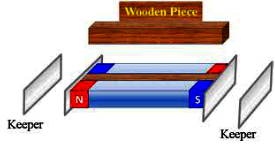
(B) Dropping it from a height or by rough handling.
(C) Heating or hammering the magnet.
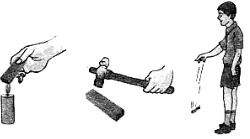
Magnets lose their property on heating hammering and dropping
Extended Learning – Activities and Projects
1. Phenomenon of attraction property of magnet
Spread out some iron fillings over a sheet of paper. Now, move a bar magnet in the fillings taking care that all parts of the magnet moves through iron fillings and observe how the iron fillings are distributed all over the magnet.
We will notice that most of the iron fillings cling near the ends of the magnet while there are a few iron fillings near the middle.
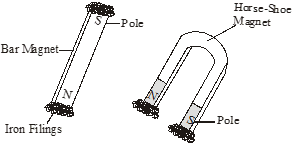
Repeat the experiment with a horseshoe magnet. This experiment explains the attractive property of magnets.
2. Magnetise an iron needle using a bar magnet.
Insert the magnetised needle through a small piece of cork or foam. Let the cork float in water in a bowl or a tub. Make sure that the needle does not touch the water. Your compass is now ready to work. Make a note of the direction in which the needle points when the cork is floating. Rotate the cork with the needle fixed in it, in different directions. Note the direction in which the needle points when the cork begins to float again without rotating. Does the needle always point in the same direction, when the cork stops rotating?
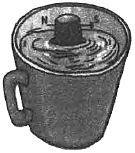
Yes, the needle always points towards the north when the cork stops rotating.
3. Phenomenon of attraction and repulsion property of magnet.
Bhawana witnessed on interesting game at the fair. A duck was floating in a tub. When a plate containing some grains of rice was brought close to the duck, the duck moved towards the plate. But, when a plate containing some pebbles was brought close to the duck, it moved away from the plate. Explain how this could have been possible.
This game is based on the plate containing rice may have magnet attached to its bottom. The magnet is fitted in such a way that its north-pole points towards rice grains, while south-pole indicate towards pebbles. A magnet (bar magnet) may also be fitted in the bottom of the duck, where south-pole points towards mouth and north-pole towards tail of the duck.
When the rice portion of the plate is brought closer to the duck, the duck moves towards rice grains because unlike poles of two magnets attract each other. In second situation, same (like) poles repel each other. So the duck moves away.
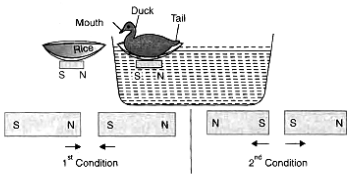

 PathSet Publications
PathSet Publications
 Param Publication
Param Publication
